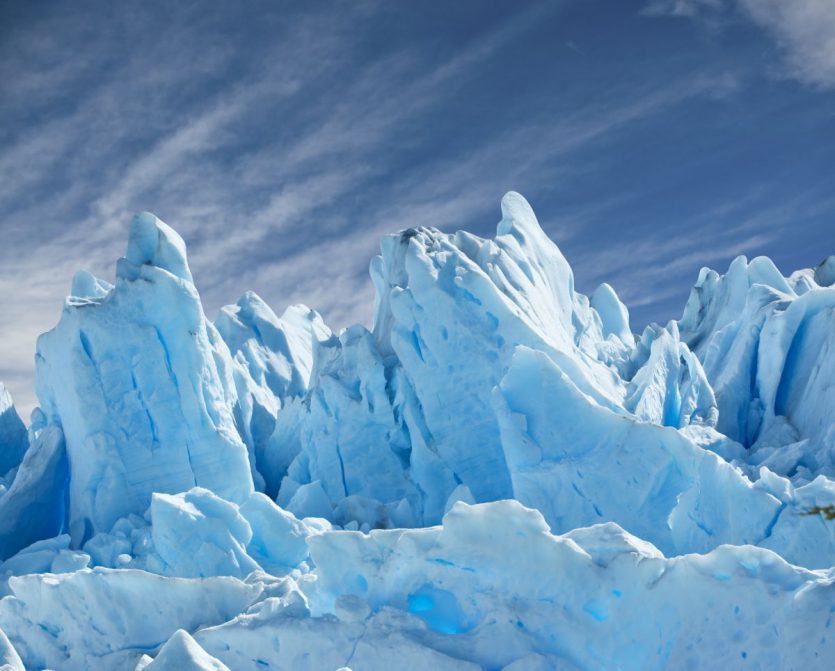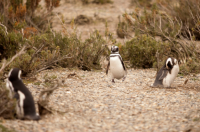Have you ever asked yourself “why are glaciers white?” Obvious as it may seem, it’s not a stupid question. It’s a good question, in fact, and a lot of people couldn’t answer it. Most people don’t spend all that much time thinking about glaciers, and we think that’s a shame. Glaciers are some of the most breathtaking natural wonders in the world, so it’s no surprise that there’s a whole lot of fascinating things to know about them. Inspired by our love affair with Glacier National Park in Patagonia, we’ve put together a list of interesting facts about glaciers.
Why are glaciers white?
Let’s answer this with another question: Well, are glaciers really white? Some are, sure. There’s even a colour whose official name is “glacier white”. In truth, however, not all glaciers are white. Take a look at glacier up close and personal, and you might find that its colour can range from white to off-white to various shades of blue.
Some glaciers appear blue because the blue part of the white light is not absorbed by the glacier ice. Red and yellow light can’t penetrate ice or snow in this way. Whether a glacier appears to be white or blue depends on how long the light has had to travel in the ice.
8 things you didn’t know about glaciers
Some glaciers are white and some are blue. There’s plenty more to the world of glaciers than colour, you know. We’ve gathered ten very interesting facts about glaciers for any occasion.

- Glacier ice is no colder than everyday ice. While it might seem sensible that glacier ice is extremely cold, in truth it’s no different than the sort of ice you buy at the supermarket.
- Size matters when it comes to glaciers. Nothing smaller than 0.1 square kilometres qualifies as a glacier. In case you’re wondering, that’s the equivalent of almost 19 football pitches or 25 acres of white glacier goodness.
- Glacier ice is the largest store of water on earth. Estimates say that glacier ice accounts for between 70-75% of the world’s fresh water supply. That’s some reservoir, right?
- Glaciers move, and quite a bit more than you might think. Glaciers have been known to move at speeds of up to 50 feet per day. That’s not going to break the sound barrier, but it’s quite a lot considering the glacier’s size.
- Alaska has over 100,000 glaciers. Nobody knows the real number, but that’s a lot of glaciers for just one state.
- Glaciers cover as much as 10% of the earth’s surface. If that sounds like a lot, it’s nothing compared to the last Ice Age. Back then, glaciers covered around a third of the planet.
- Glacier thickness varies widely. Of the glaciers that have been measured by scientists, thickness ranges from around 10 metres to some 1,500 metres.
- You won’t find woolly mammoths and other prehistoric creatures preserved in glacier ice. Where such specimens are found, it is most likely to be a type of ice known as permafrost. Glacier ice is not suitable for this sort of preservation.
No comments yet
There are no comments on this post yet.





Leave a comment